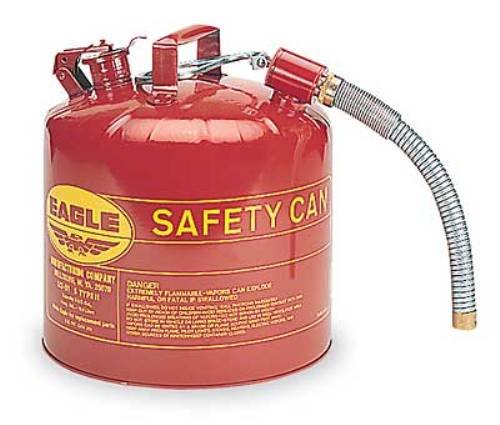Winterizing your boat is the single most important maintenance duty that you will have to perform as a boat owner. If it is done correctly, very little work will be required to get the boat ready for the water in the spring. Proper winterization greatly extends the life of the boat and its engine by protecting its components from freezing, corrosion and lying idle for long periods.
The first step in the winterization process is to ensure that the boat's fuel tank is full - leave just a little room for expansion - and add fuel stabilizer in accordance with the instructions on the product. If the fuel tank isn't full you run the risk of condensation forming within the tank which can lead to corrosion and clogging.
Turn off fuel valves and seal through-hull exhaust ports with duct tape. Replace the water separator and the fuel filter.
Protecting Your Engine
Run the engine for a while to warm it up and change the oil while it's warm. This allows many of the impurities in the oil to be drained away. Change the oil filters. If your engine uses coolant drain the current fluid from the engine block and manifolds and replace it with a propylene glycol based antifreeze.
When a boat is not being used, oil tends to settle at the bottom of the engine block, exposing the pistons and valves to air, humidity and other corrosive materials. To avoid this situation remove the spark plugs and spray "fogging oil" inside the carburetor and into each cylinder. Replace the spark plugs without reconnecting the wires.
Replace the engine's old gear oil with fresh oil. Dispose of any used oil at an authorized recycling center.
Outboards
Flush outboard engines with fresh water. Allow all water to drain from the engine and wash down the engine with soap and water. Disconnect the fuel hose and run the engine until it stops. It is important to ensure that all fuel is drained from the carburetor. Use fogging oil in the cylinders. Apply water resistant grease to propeller shaft and threads, and lightly lubricate the exterior of the engine or polish with a quality wax. Change the gear oil in the lower unit.
If your boat will be stored out of the water during the off season, disconnect the battery and store it at home. Boats left in the water should have the battery left in place on board and functioning so the bilge pump will continue to function if required. If you are removing the battery from the boat, ensure it is fully charged before stowing it away. Recharge every 30-60 days or keep on a trickle charger during the storage period and check the water level from time to time.
It is also sensible to remove any valuable marine electronics from the boat for the winter, and to store this equipment in a safe place to avoid theft and possible damage caused by temperature changes and humidity. The winterization process also offers an opportunity to inspect items like lines, flotation devices, flares, fire extinguishers, etc., for wear and tear and possible replacement.
Propeller
This is also a good time to check your boat's propeller and hub. Bent or nicked propeller blades will diminish performance. The hub may also be have sustained extensive wear. If this type of damage is apparent, replace the propeller and make any necessary repairs during the winterizing process.
Clean, Clean, Clean
Clean the boat thoroughly inside and out. If you store your boat with dirt, scum, barnacles and the like on the exterior, these impurities will be even harder to remove in the spring. After the exterior of the boat has been cleaned, apply a quality polish to the exterior surfaces to create a protective barrier against dirt and dust. Clean the interior, including all timber, vinyl and carpet.
To help keep your boat free from mildew, you may wish to install a dehumidifier or use a moisture absorber. Turn any cushions up on edge so that air can circulate around them, or better yet, remove them from the boat.
Drain and clean the bilges. (If your boat will be stored out of the water remove all drain plugs and put them in a place where they'll be easy to find when relaunching your boat in the spring.) Spray the bilges with moisture displacing lubricant and add a little antifreeze.
Empty The Head
Pump out the holding tank at an approved facility. While pumping, add fresh water to the bowl and flush several times. Use an approved cleaner for your type of system, and let the solution sit for a few minutes before adding more fresh water and pumping it out again. Add antifreeze and pump the coolant through the hoses, holding tank, Y-valve, macerator and discharge hose. Check your owner's manual to be sure that an alcohol based antifreeze won't damage your system.
Water Tanks
Drain the fresh water tank and any hot water heater. Isolate the hot water heater by disconnecting the in and out lines and connecting them together. Pump non-toxic antifreeze through the system by turning on all the taps / shower until the antifreeze starts coming out. Add non-toxic antifreeze to the water heater.
Put it on Blocks
If you own a trailer boat, consider putting the boat and trailer up on blocks for winter to take the pressure off the tires. Inspect the trailer and tires for wear and tear. Grease the wheel bearings and replace if necessary.
If at all possible, store your boat undercover. If you need to leave it outdoors you'll require a boat cover. A good quality 8- to 10-ounce canvas boat cover should be adequate for most situation. Even undercover the boat should be covered to protect against dust and dirt, pests and bird droppings. For extreme conditions you could consider shrink-wrapping the boat. Do-it-yourself kits are available.















